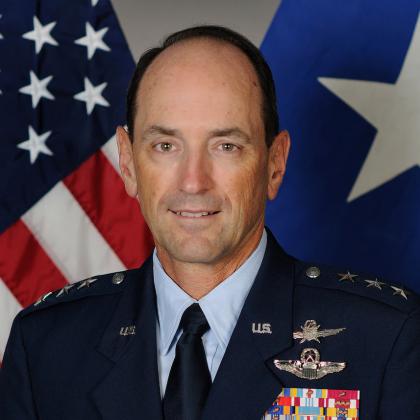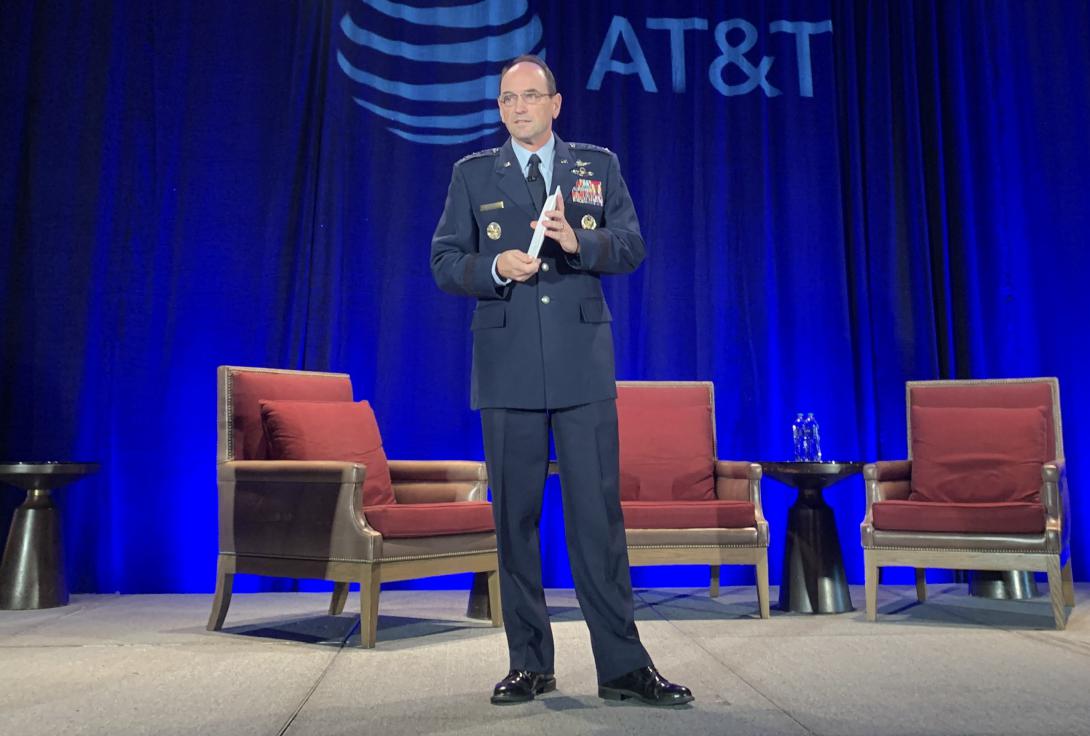16th Air Force Flies in the Gray Zone
Three years in, the Air Force’s information warfare organization is evolving further, focusing on providing five critical functions to the service. The 16th Air Force “connects, hunts, exposes, contests, and if necessary, defeats” adversaries. Three of these functions—connect, expose and contest—are at the core of activities in the ‘gray zone,’ the threshold just under war, reports Lt. Gen. Kevin Kennedy, USAF. And it is in this environment that the service must succeed against our two main adversaries, China and Russia.
“We are looking at how we design our force, how we design our tactics, how we field capabilities to make sure we can contest malign intent by the PRC [Peoples Republic of China],” Gen. Kennedy stated, speaking November 15 at the AFCEA Alamo ACE annual conference in San Antonio. “We're going to deter and defeat Russian attacks on U.S. interests. And again, we're seeing those interests largely in gray-zone activity outside of the [Ukrainian] theater…. And we're going to do that by investing at home. We're going to do that by aligning with partners and allies. And we're going to do that by competing to defend our interests. And that's really what we're talking about…. It is about winning and competing in the gray zone.”
In July 2022, Gen. Kennedy became the leader of 16th Air Force, taking over command of the Numbered Air Force (NAF) from Lt. Gen. Timothy Haugh, USAF, when Gen. Haugh moved to become deputy commander of U.S. Cyber Command at Fort Meade, Maryland.
The general also is the commander, Air Forces Cyber and commander, Joint Force Headquarters-Cyber (Air Force), all at Joint Base San Antonio-Lackland, Texas. Among these other roles, Gen. Kennedy serves as the Air Force’s representative to U.S. Cyber Command. The 16th Air Force commander is also the Air Force network operations crew manager, running all the networks that the Air Force provides at the unclassified, secret and higher classification levels. And as the service’s cryptologic component commander, the general supports airmen the service provides to the National Security Agency or other efforts across the intelligence community.

We are looking at how we design our force, how we design our tactics, how we field capabilities to make sure we can contest malign intent by the PRC [Peoples Republic of China]. We're going to deter and defeat Russian attacks on U.S. interests. And again, we're seeing those interests largely in gray zone activity, outside of the [Ukrainian] theater…. It is about winning and competing in the gray zone.
At the time big Air Force stood up 16th Air Force in September 2019, converging those information warfare capabilities within one NAF and within the service’s Air Combat Command was a critical step in generating both kinetic and nonkinetic combat power for the Air Force.
“Historically, we had just not been designed for this type of activity,” he said. “The idea that really was at the core of the foundation of 16th Air Force was how do we seize and maintain the initiative in the information environment by converging enterprises to develop, coordinate and combine these strengths to maximum effects.”
In aligning itself to operating in the gray zone, the NAF does have to balance adroitly the complexity of providing multisource intelligence, surveillance and reconnaissance (ISR) products, applications, capabilities, as well as electronic warfare—in addition to the cyber components, the general acknowledged.
“The goal with ISR, and I think we have a good way ahead on this, is how do we continue to improve and evolve our ability to fuse the various sources of intelligence that are out there,” Gen. Kennedy explained. “This is a big data problem. How do we continue down that path…. I think we're making great strides and understanding how we do that faster, to enable more outcomes, whether it's to support information operations or support decision-makers and competition or crisis, as well as to increase our ability to be more lethal in conflict.”
Regarding the electronic warfare (EW) piece, the NAF is still looking to modernize its fleet of EC-130s. “One of the primary means for EW for the 16th Air Force is the EC-130, and we're going to upgrade and modernize that,” he shared. “I think that will help us increase the ability to get more tactically and operationally relevant in the theaters in which we expect to have to deploy.”
The commander sees that the consolidation of information warfare into one NAF does bring speed. “It is the convergence of these authorities to 16th Air Force, administratively and operationally, that is key to gaining advantage in defending our nation's interests in the gray zone,” he noted. “We brought together missions that are interdependent missions, which relied upon each other to achieve outcomes…. and the value of having them in the same NAF is generating speed to support that interdependence.”
“As we think about our two primary adversaries and we think about where we're going and what this means to our future, as we field capabilities, develop, equip and train our force to be able to attest in this environment and to protect and defend our interests, what we're approaching…. I believe, is a very decisive decade that is going to write the next 50 or so years of the strategic environment.”






Comments